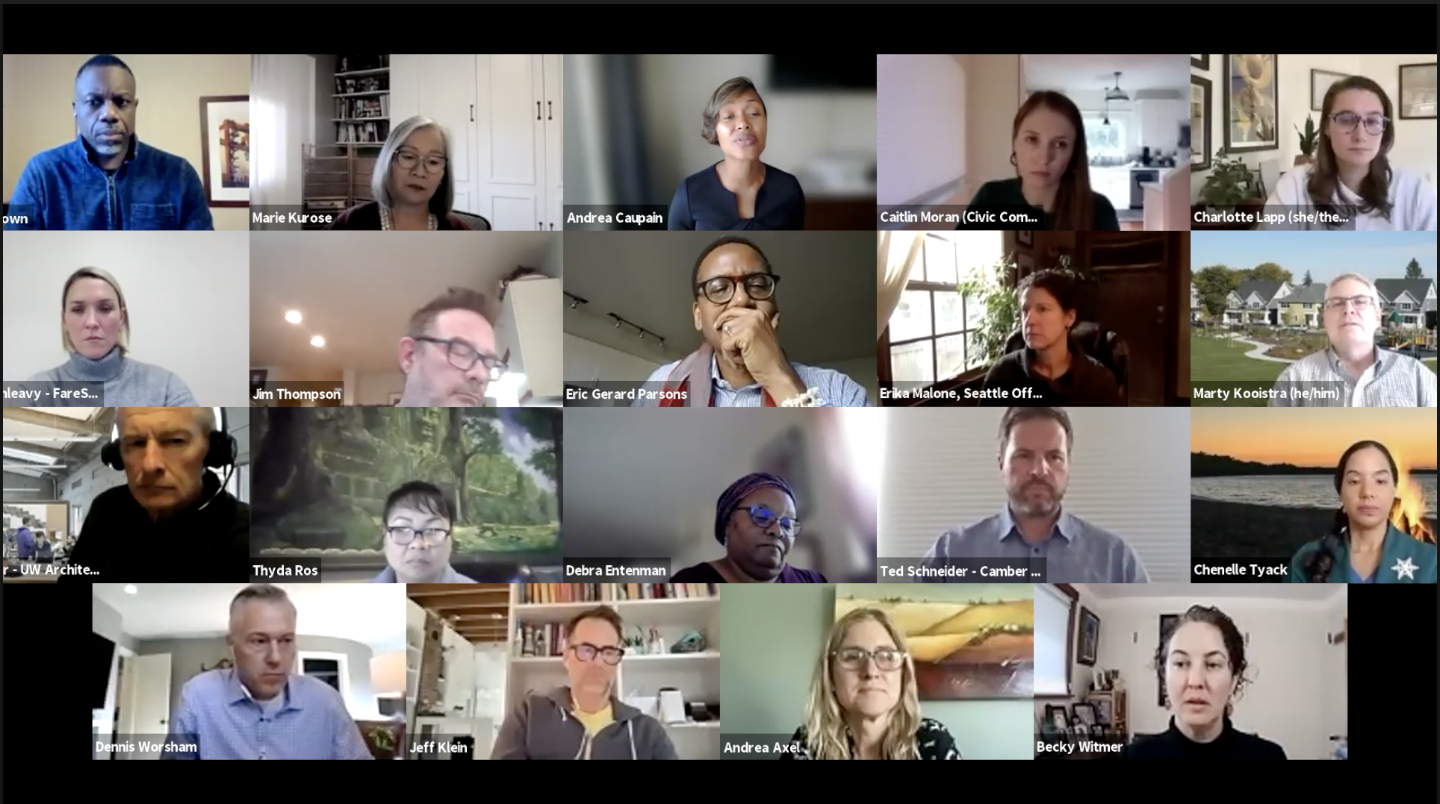The building blocks of Shared Prosperity
The Civic Commons Scorecard for Shared Prosperity is more than just a data report. It’s a living dashboard that’s intended to inform the work happening in the Puget Sound region around equity, affordability and access to opportunity.
This past November, we convened dozens of community leaders for a virtual workshop focused on better understanding the Scorecard and brainstorming ways to take action based on the data it presents. When Prosperity Doesn’t Reach Everyone: A Community Workshop was co-produced by The Evergrey and included breakout room discussions led by Andrea Caupain Sanderson, CEO of Byrd Barr Place; Marie Kurose, CEO of the Workforce Development Council of Seattle-King County; and Dennis Worsham, interim director of Public Health — Seattle & King County. (Scroll the end of this post for a full event replay.)
Some of the speakers and attendees at our Nov. 16 Scorecard for Shared Prosperity workshop
The workshop’s small-group discussions focused on the first three Scorecard dimensions: Individuals, Households and Communities. Participants engaged around these questions:
What are some of the most pressing needs associated with this dimension?
How will we know when progress is made?
What are some resources/ways to take action?
The last question — what can we do? — is critical. We want the Scorecard to inform action, not merely exist as another data point highlighting our region’s struggles with equity and affordability.
Here are some of the ideas presented in the breakout group sessions:
Structural
Overhaul zoning and housing development processes to make close-in neighborhoods more accessible.
Reform our tax structure to ensure more financial resources and help further shared prosperity.
Target more upstream investments while continuing to provide services for people here and now.
Center efforts to address systemic racism across all interventions.
Create more sustainable family wage jobs for underrepresented communities
Ensure that schools and other organizations that work with young people are staffed and funded to handle the rise in mental health needs for youth.
Tactical
Get better disaggregated data to help analyze our progress and guide future planning.
Affordable housing is key, and we need to establish better linkages across all sectors to make it happen.
Speak with local school board members to see how to increase budgets for mental health investments for students.
Coordinate long-term strategies and solutions to prevent future displacement.
Move away from individualized top-down solutions to those that strengthen communities.

